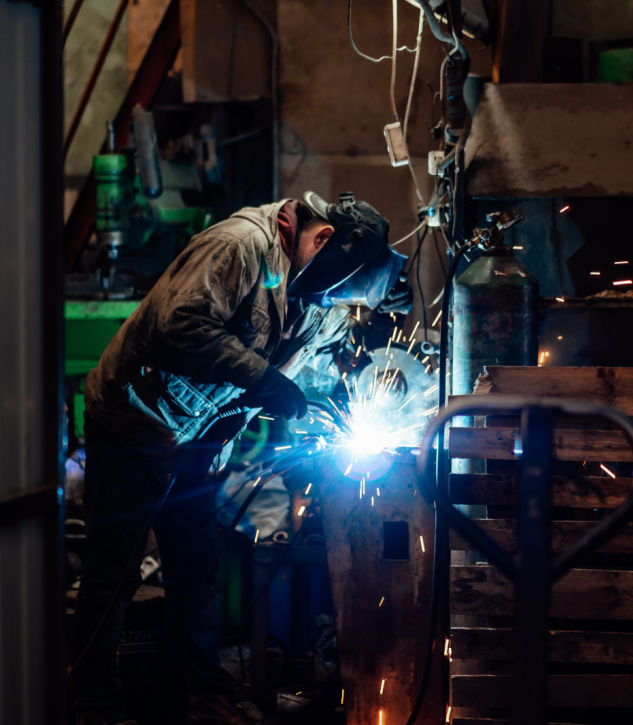
Revitalizing the Heartland: The Pros and Cons of Bringing Manufacturing Back to North America
The Pros of Bringing Back Manufacturing to North America
As we navigate the complexities of the global economy, one trend gaining momentum is reshoring or bringing back manufacturing jobs to North America. This movement holds significant economic growth, job creation, and national security potential. Let’s delve into the numerous benefits of reshoring.
Job Creation: A Surge in Employment Opportunities
Reshoring is creating a wave of new job opportunities for Americans. In 2022 alone, reshoring was on track to generate more than 400,000 manufacturing jobs in the U.S. This marks the third consecutive year where reshoring has created more jobs than foreign direct investment. Projections for the current year suggest another record with around 350,000 jobs added back to U.S. soil. The Reshoring Institute predicts that more than 2.1 million new jobs will be created by 2030 with reshoring and other favorable policies.
Higher Product Quality: Made in the USA Stands Tall
Products made in the U.S. are often associated with higher quality standards. American manufacturers adhere to strict regulations and quality controls, which can lead to superior outcomes. Consumers are also becoming increasingly conscious about the quality and origin of their purchases, adding value to the ‘Made in the USA‘ label.
National Security: Strengthening the Home Front
Domestic manufacturing plays a crucial role in ensuring national security. Production capabilities within the country, especially in critical sectors like advanced computer chips, reduce dependency on foreign suppliers and is particularly important in geopolitical tensions or disruptions in international trade.
Positive Impact on Supply Chain: A Solution to Disruptions
The recent global supply chain disruptions highlighted the risks of over-reliance on overseas manufacturing. Reshoring can help mitigate these risks by shortening supply chains and reducing the impact of international shipping delays. With manufacturing plants closer to home, companies can respond more quickly to changes in demand and reduce the risk of stockouts.
In conclusion, reshoring presents a promising path for North America’s economic future. It’s not just about bringing jobs back; it’s about improving product quality, bolstering national security, and creating a more resilient supply chain. The next decade is the era of American reshoring.
The Cons of Bringing Back Manufacturing to North America
While the reshoring trend—bringing manufacturing back to North America—offers several benefits, it’s only fair also to explore the potential downsides. Here, we’ll delve into the challenges of reshoring, from increased costs and skill gaps to limited product variety and difficulties for smaller businesses.
Increased Costs: The Price of Domestic Manufacturing
A significant downside of domestic manufacturing is the potential increase in production costs. American labor is generally more expensive than in many overseas markets, which can lead to higher prices for consumers1. This cost disadvantage may worsen as wages continue to rise at rapid rates. While some consumers are willing to pay a premium for ‘Made in the USA’ products, others may favor affordability over origin.
Skill Gap: Retraining the Workforce
The resurgence of manufacturing jobs in North America also presents a challenge: the skills gap. Modern manufacturing requires new skills, including digital literacy and advanced technical knowledge. As The Conversation points out, the success of reshoring hinges on training American workers. Companies may need to find skilled workers with significant investment in education and training programs.
Limited Variety: A Potential Loss in Product Diversity
Another potential downside to reshoring is the risk of limiting product variety. With manufacturing concentrated domestically, fewer unique products may be available. Consumers have become accustomed to a wide range of goods sourced globally, and reshoring could limit this diversity; however, American manufacturers focused on innovation and diversification can mitigate this concern.
Challenges for Small and Midsize Companies: Navigating Recruitment and Production
Reshoring can pose significant challenges for small and midsize companies. These firms often find themselves at a severe recruiting and production disadvantage. They may need more resources to invest in new facilities or compete with giant corporations for skilled labor. Additionally, the complexities of setting up domestic manufacturing operations could be particularly daunting for smaller businesses.
While the reshoring trend holds promise, it’s challenging. Increased costs, a skills gap, limited product variety, and difficulties for smaller businesses are all potential downsides that need consideration. As with any major economic shift, careful planning and strategic investment will be vital to navigating these challenges.
WeKinnect Global Branding Agency takes pride in supporting Small Businesses that fuel local economies. If you are a small business seeking to differentiate yourself, let us assist you in differentiating your brand, product, and service.
How Citizens Can Support Reshoring Efforts in North America
Reshoring, bringing manufacturing and services back to the home country, has been a hot topic in recent years. As North American companies strive to bring jobs back home, it’s essential to understand how we, as citizens, can support this movement. Here are some ways you can actively participate in reshoring efforts.
- Buy Local and Made North America Products
The most direct way to support reshoring is by purchasing goods made locally. By choosing products made in North America, you’re supporting local businesses and encouraging manufacturers to continue production domestically.
- Advocate for Fair Trade Policies
Fairtrade policies ensure that workers in all countries involved in producing an item are paid fairly and work under safe conditions. By advocating for these policies, we can encourage companies to maintain their operations in North America, where labor standards are generally higher.
- Promote Education and Training in Manufacturing
There’s a common misconception that manufacturing jobs are low-skilled and low-paying. Many require a high skill level and offer competitive wages. Promoting education and training in these areas can help create a skilled workforce that attracts manufacturing jobs back to North America.
- Encourage Sustainable and Ethical Manufacturing Practices
Many consumers are becoming more conscious of how their purchasing decisions impact the environment and society. By supporting companies prioritizing sustainability and ethical manufacturing practices, we can incentivize more businesses to operate in regions with high values, like North America.
- Voice Your Support for Reshoring
Finally, use your voice. Whether through social media, conversations with friends and family, or correspondence with your local government representatives, you support reshoring jobs to North America. Your voice can influence others and sway public opinion.
Supporting reshoring is not just about bringing jobs back to North America. It’s about promoting fair labor practices, supporting local economies, and fostering sustainable business practices. As consumers and citizens, we have a role to play in this critical movement. So next time you’re making a purchase or discussing economic issues, think about how you can support reshoring efforts in your small way.
About the author : Michelle Summer
Meet Michelle Summer our dynamic Marketing Services Manager. With an impressive background in marketing strategy and content development, Michelle brings a wealth of knowledge to our team. Passionate about impactful communication, Michelle is adept at creating compelling narratives that captivate our audience and drive engagement. As a key supporter of our blog writing, she ensures that our content is not only informative but also resonates with our readers. With a keen eye for detail and a knack for understanding market trends, Michelle continually helps us deliver content that is relevant, insightful, and ahead of the curve.







